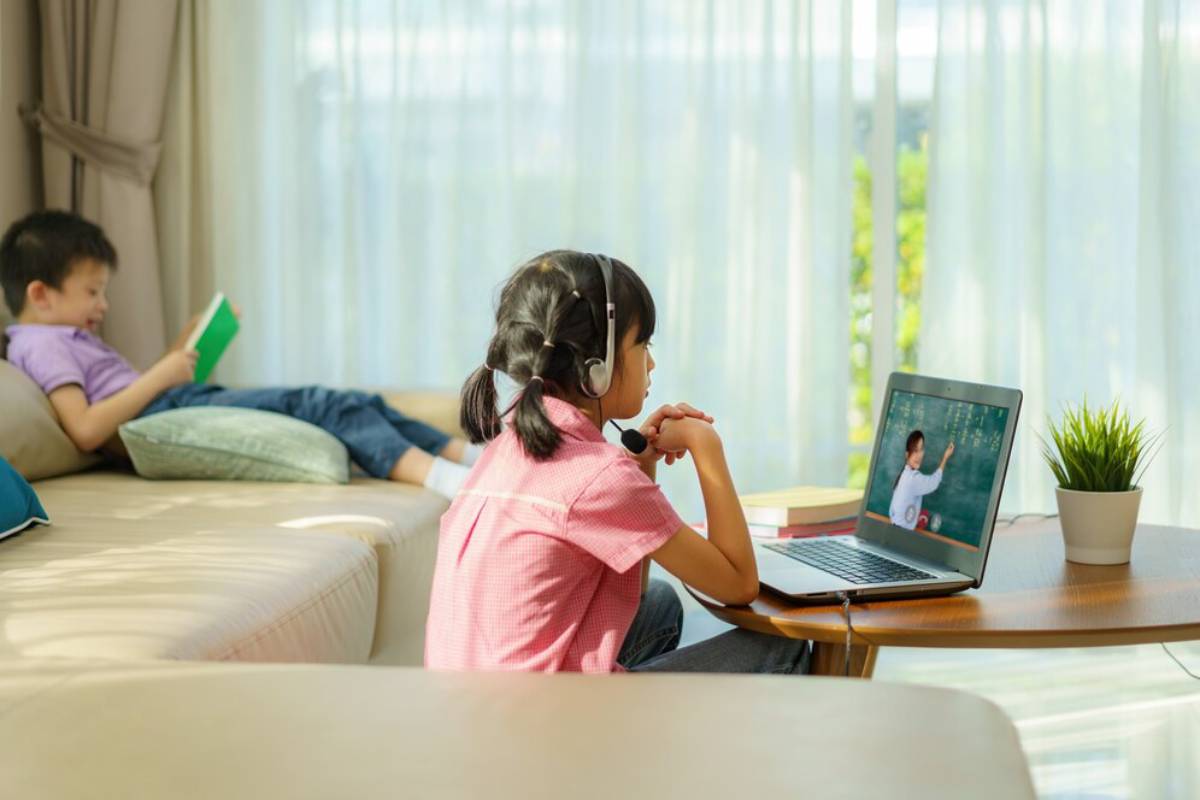
Setting Screen Limits for Toddlers vs. Teens: Navigating Tech Use Boundaries by Age
In today’s world, technology weaves seamlessly into the fabric of our lives. It offers countless conveniences that simplify our daily routines. With more screens at home, parents are increasingly worried about managing their kids’ screen time. Setting screen limits for toddlers and teens is important, as their development and needs are very different. This blog dives into the digital landscape for various age groups. From toddler tech time to teen screen strategies, it aims to empower families in cultivating healthy tech habits.
Why Setting Screen Limits Matters
Establishing screen limits for kids and teens is crucial for their well-being. Excessive screen time can spark a host of issues, including sleep troubles, reduced physical activity, and diminished social skills. Experts worry about the toll of screen time on mental health and cognitive growth.
For Toddlers: The Impact on Development
Toddlers are like little sponges, soaking up knowledge at lightning speed. Their minds blossom as they explore thinking, social skills, and emotions. However, too much screen time can hamper this growth. In these formative years, face-to-face interaction is their classroom for communication. Through genuine connection, they learn to express feelings and play well. Excessive screens steal precious moments of vital learning and bonding.
Numerous studies reveal that a screen-heavy diet for toddlers may stifle speech. These little ones often find themselves fumbling with social cues and connections. Meanwhile, physical activity is the secret ingredient for developing motor skills. Sadly, playtime is frequently traded for screen time.

For Teens: The Risks of Prolonged Screen Use
Teenagers, navigating the stormy seas of adolescence, feel screen time’s ripple effects. Social media, in particular, stirs up turbulent waters. This phase centres on independence, self-discovery, and bonding with peers. Yet, technology can amplify shadows of anxiety, depression, and isolation.
Adolescents face a higher risk of unhealthy sleep patterns. This is due to blue light from screens. It disrupts melatonin production and harms sleep quality. This can cause sleep deprivation. In turn, this affects academic performance, mood, and overall health. Setting clear screen time limits helps parents reduce risks. It also supports teens in building healthier habits and coping skills.
Understanding Screen Time by Age
Screen Time Guidelines for Toddlers
Regarding toddler tech use, the key is moderation and mindful engagement. The American Academy of Paediatrics (AAP) recommends that kids 18 to 24 months old watch only high-quality programs. Parents need to be there to help them understand. Children aged 2 to 5 should have at least one hour of screen time daily. This time should focus on educational content.
It’s important to limit screen time. But remember, not all screen time is the same. Educational apps and videos that promote learning can be beneficial, provided parents are actively engaged in the content. Interactive apps can help toddlers learn basic skills like numbers, letters, and shapes. These tools lay a strong foundation for early learning. Video calls with family help toddlers stay connected. They also boost their communication skills. This way, they avoid the risks of mindless passive viewing.
Parents should monitor what content their toddlers consume and limit passive screen activities. This means watching videos, playing games that aren’t for learning, or using content that doesn’t support education. The goal is to ensure that screen time helps kids grow instead of holding them back.
Screen Time Guidelines for Teens
Setting screen rules for teens can be tough. They usually have their own devices and more freedom. The AAP recommends that teens have set limits on screen time. This helps ensure screen time doesn’t interfere with sleep, exercise, or other essential activities. There’s no one-size-fits-all answer. Limiting recreational screen time to under two hours daily is a good rule.
Screen time for teenagers is more complex than just limiting fun activities. Many teens use screens for school. They learn online, research, and chat with classmates for group projects. Therefore, it’s essential to differentiate between productive and non-productive screen time.
Involving teenagers in setting screen limits lets them control their tech use. Talking about the risks of too much screen time is essential. It can affect mental health, grades, and relationships. By discussing these issues, teens can make better choices about their screen use. Letting them help set the rules can make them feel more empowered. This can lead to a greater willingness to follow boundaries.
Additional Expert Tips & Common Mistakes to Avoid
Best Practices for Managing Toddler Tech Use
- Be a Role Model: Children learn by observing their parents’ behaviour. Demonstrating healthy screen habits yourself can encourage toddlers to follow suit. If you set the example by limiting your screen time, your toddler is more likely to mimic that behaviour.
- Create Tech-Free Zones: Set aside areas like the dining room and bedrooms where devices are not allowed. This helps encourage face-to-face talks and improves sleep hygiene. This can also foster a sense of family togetherness during meals and bedtime.
- Encourage Active Play: Focus on physical activities and free play. These are key for toddlers’ growth and thinking skills. Running, jumping, building, and exploring nature boost motor skills and spark imagination.
- Use Tech to Connect: Don’t just rely on passive content. Use technology to create fun, interactive experiences. Set up video calls with grandparents or close relatives. This lets your toddler engage socially while using technology in a meaningful way.
Common Mistakes to Avoid with Teen Screen Rules
- Inconsistent Rules: Not enforcing screen time rules can confuse teenagers and lead to pushback. Establish clear and consistent guidelines to ensure everyone is on the same page. To get better sleep, limit screen time at night. Also, have tech-free meals with family. Consistency is key.
- Don’t Depend Too Much on Monitoring Apps: These apps can assist but can’t replace open conversations and trust with teens. Talk openly about screen use and its effects. Also, share the reasons for the rules clearly. Apps can help monitor usage, but they should complement, not replace, active conversations.
- Encourage teenagers to enjoy offline activities: They can play sports, explore hobbies, and hang out with friends, which helps them lead a balanced lifestyle. Parents shouldn’t just limit screen time; they should also encourage extracurricular activities that help kids grow and feel good.

Advanced Insights
Balancing Screen Time with Educational and Social Benefits
Establishing screen limits is vital, but let’s not overlook technology’s treasures. For toddlers, interactive apps and educational programs are stepping stones to early learning. With lessons on numbers, letters, colours, and shapes, they build a firm foundation for future school triumphs.
Teenagers, on the other hand, harness technology to build connections and explore knowledge. It opens gateways to educational resources and equips them with critical skills, such as coding and digital literacy.
Parents, take note: Prioritise quality over quantity in screen time. Encourage kids to explore fun, age-appropriate content. This helps them enjoy technology’s benefits and stay safe. Grant access to educational websites, and embrace video platforms as vibrant learning tools.
Inspire creativity with digital art tools, balancing screen time for well-rounded development. This approach supports your child’s educational journey while ensuring they thrive in the digital age.
Encouraging Digital Literacy and Critical Thinking
In today’s digital jungle, kids and teens crave critical thinking skills. Parents hold the keys to unlock this treasure trove of knowledge. Start conversations about online safety and privacy, for awareness is your ally. Illustrate why scrutinising information is vital for digital survival. Parents can guide young minds to discern credible sources amidst the noise. Empowered, children can navigate screen time wisely.
Nurturing critical thinking in what they watch and read fosters independence. This equips them to make informed decisions that shine like diamonds. Engage in dialogues about social media’s swirling pressures; reveal the truth behind curated illusions. Unravel the distinction between authentic life and the glamorised virtual veneer. Parents can boost their children’s internet skills by focusing on privacy, online behaviour, and sharing personal details.
Conclusion: Navigating Tech Use Boundaries by Age
Managing screen time for toddlers and teens is tough, but it’s crucial for tech-savvy families today. By cultivating healthy tech habits, families can nurture a balanced digital diet. Understanding the varied needs of different age groups is key to this quest. With age-tailored guidelines, parents can pave the way for a harmonious lifestyle.
As technology evolves, staying abreast of fresh research and insights is vital. Parents play a pivotal role in steering their kids toward success in this digital realm. Talking about responsible tech use helps build understanding and trust.
The goal isn’t to cut out screen time altogether. Instead, it’s about finding the right balance. This balance encourages growth and development for every child. Parents can set clear boundaries and promote good screen habits. This way, they help their kids thrive online!


